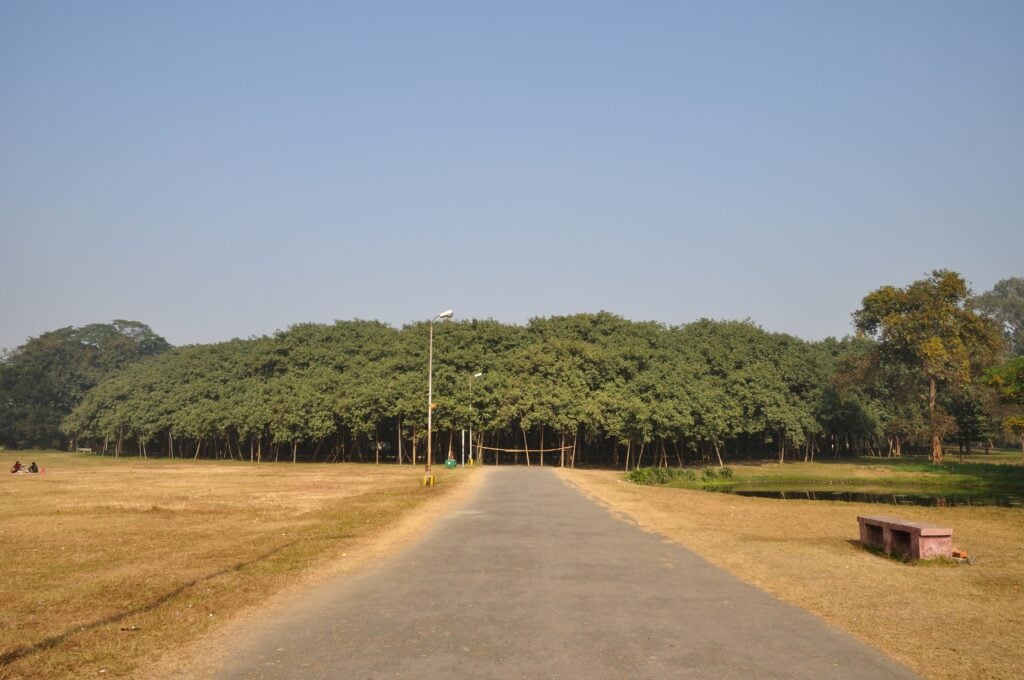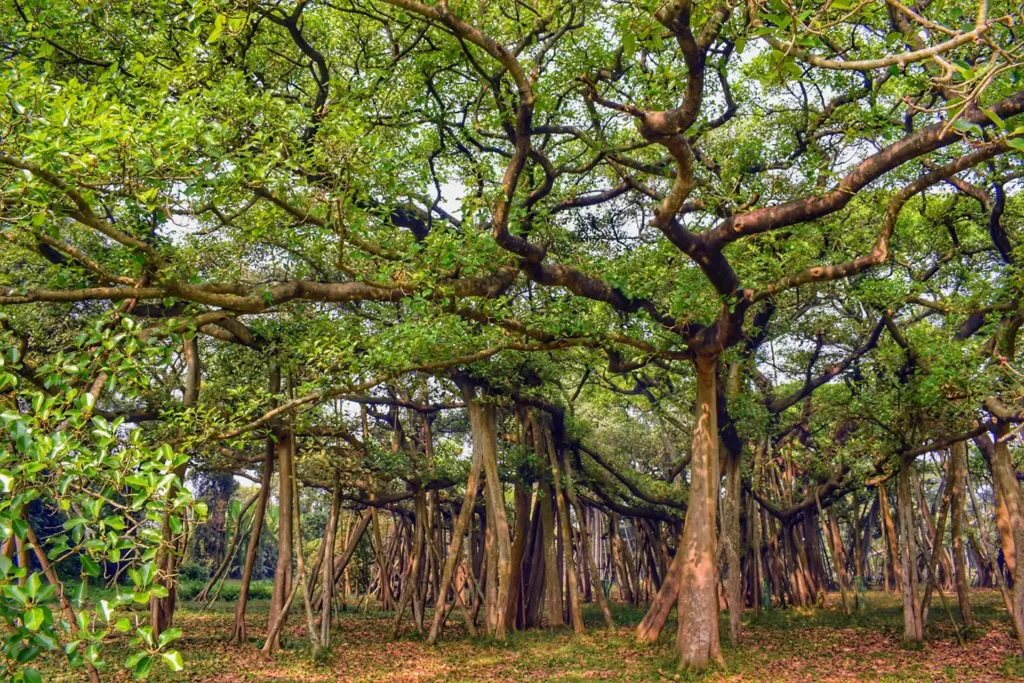What looks like a dense forest on the outskirts of Kolkata, West Bengal, is in fact a single tree with thousands of aerial roots, known as The Great Banyan.

The remarkable organism is found in the Acharya Jagadish Chandra Bose Botanical Garden. At least 250 years old, it covers roughly 200,000 square feet (roughly the size of four football fields), making the Great Banyan one of the widest trees in the world. It stands 79ft tall.
Banyan trees, known botanically as ficus benghalensis, are native to India and are the Indian national tree. They are commonly called ‘strangler figs’, because they start their lives by leaning on other trees, which they eventually suffocate. The forest-like visual effect is caused by their aerial roots, which branch down to the ground and look like individual trees. In the case of the Great Banyan, it has roughly 3,600 aerial roots, or “prop-trunks”.
Read More: Inside London’s Super Sewer | The mammoth new tunnel under the River Thames
The Great Banyan has survived three major cyclones. The first two were in the 1860s and led to the tree being infected by fungi. The main trunk decayed, but the rest of the tree continued to grow, and the Great Banyan has now survived without its 51-ft-wide main trunk since it was removed in 1925. The third cyclone to hit the tree was Cyclone Amphan in May 2020 and led to the loss of roots.

Nicknamed “the walking tree”, due to its ever-expanding size, the Great Banyan has now grown beyond the 1,080ft road that was once built around it. The center of the tree, where the main trunk once stood, is largely inaccessible to the thousands of visitors who go to see the tree each year.
In 1989, the Guinness Book of World Records recognized it as the tree with the largest canopy cover in the world, and the widest span of area – both records the Great Banyan still holds.





